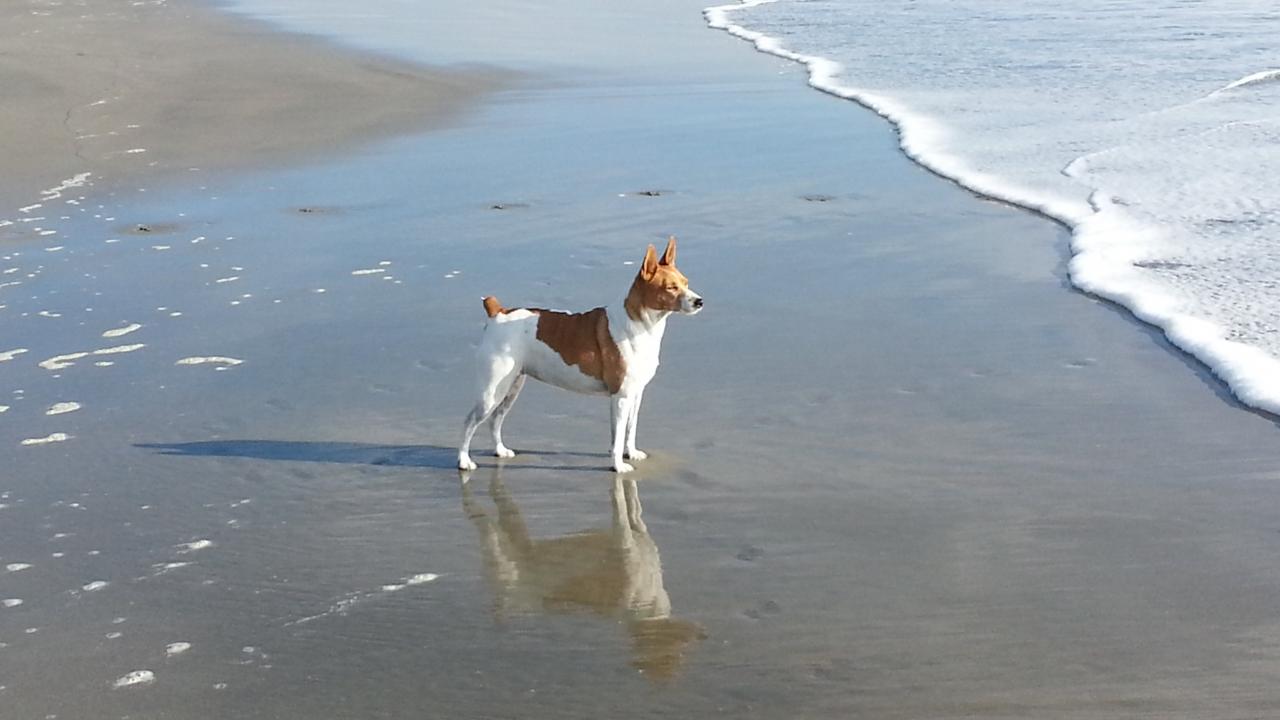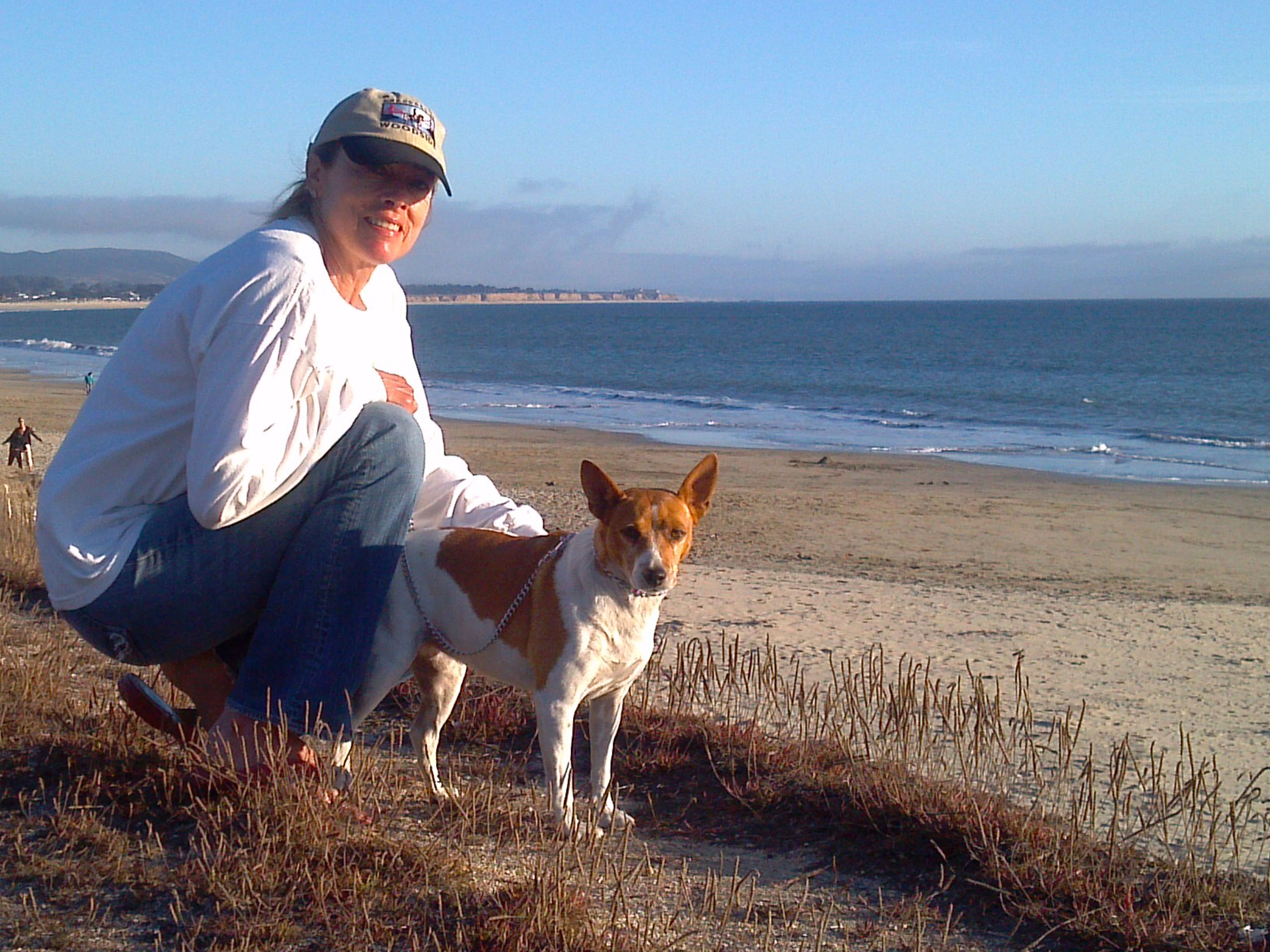
Neurosurgery and a Dedicated Owner Help Paralyzed Dog Walk Again
“Case of the Month” – May 2020
Goldie, 14-year-old female spayed rat terrier, was living the good life on a horse farm with plenty of open land to run free. Her owner, Renee Johnson, describes her as full of vigor, rambunctious, and enthusiastic, with too much energy for city life in a small yard. Her duties as a barn dog kept her busy minding the 14 horses in her guard, not being afraid to bark orders when the horses were out of line or misbehaving. Unfortunately, that comfortableness around the horses got her in trouble, getting severely injured when one of them accidentally stepped on or kicked her.
Johnson rushed Goldie to the local veterinary emergency room where x-rays showed her back was fractured and her right hip was dislocated.
“Goldie laid on the emergency room table looking at me calmly but completely paralyzed. I was devastated,” said Johnson. “I've had dogs as long as I can remember, and I’ve loved and enjoyed all of them. But never have I been so bonded with a dog as this little rat terrier. We have a strong attachment – she has been my selfless shadow for 14 years.”
Goldie’s prognosis for recovery was poor, especially considering her age. The veterinarians strongly recommended she be euthanized.
“I sat with her and laid over her for hours, trying to make that final decision,” said Johnson. “Rationally and logistically, I knew what the right choice should be. Our budget was already strained, and her age was against her. I searched the internet for hope for nearly six hours while I struggled with the terminal option. During those hours, I found one paragraph, one possibility that she might have a chance. That one paragraph changed our lives.”
Early the next morning, Johnson drove Goldie four hours to the UC Davis veterinary hospital to be evaluated by neurosurgeons and hopefully get a second chance at life.
“At UC Davis, Goldie and I met Dr. Karen Vernau of the Neurology/Neurosurgery Service,” said Johnson. “I call her Goldie’s angel. She felt confident she could put Goldie back together again.”
X-rays and a CT scan confirmed the diagnosis of a spinal fracture and luxation in the middle of her back. Goldie also had a luxation of her right hip, meaning the ball of her femur was not sitting normally in the hip socket.
Dr. Vernau and the UC Davis neurology/neurosurgery team performed surgery to stabilize Goldie’s spine. They were able to put the luxated vertebrae back into alignment, and then placed pins into the vertebrae to stabilize and hold the vertebrae into alignment. While under anesthesia, her hip was also manually put back into place. Goldie recovered well from surgery, but continued to have pain in her hip. The following day, it became dislocated again, requiring the Orthopedic Surgery Service to perform a femoral head ostectomy (FHO) surgery several days later. FHO surgery removes the head of the femur so there is no longer bone-on-bone contact in the hip joint, which is causing pain.
Following FHO surgery, Goldie recovered well, and the hospital’s veterinary technicians began her rehabilitation with passive range of motion (PROM) and standing exercises. Goldie remained comfortable with good motor function in both back legs and recovered as expected during her nearly two-week hospitalization.

On the trip home, Johnson took a long detour to the beach (one of Goldie’s favorite places), keeping a promise to Goldie if she got through this.
“She seemed to enjoy the sand, breathing in the ocean air and being outside,” Johnson said, remembering that day. “Goldie had come a long way from the night of the accident, but there was still a long, unknown road ahead.”
Dr. Vernau warned Johnson that it would require six to nine months for Goldie to heal from her spinal cord injury and that some degree of abnormality to her gait was likely. Her recovery would depend on a continuation of the PROM and weight bearing exercises.
At her six-week recheck appointment, Goldie had significantly improved. While she was still not walking, Dr. Vernau was happy with her progress.
Johnson continued Goldie’s rehabilitation to help her regain mobility. For the first two months, Goldie’s attitude progressively declined.
“She seemed frustrated with herself and her situation,” Johnson said. “She had always been very active, and now she was trapped in this body, struggling to move her back-half. Oftentimes, she looked at me, and I wondered if I had made the right choice for her.”
To improve Goldie’s spirits, Johnson loaded her in the back of a golf cart and started taking her to the horse barn daily.
In the beginning of her third month of recovery, Goldie could stand and support her own weight. Johnson purchased a small pool to allow Goldie to start aqua therapy treatments in order to incorporate more physical activity into her rehabilitation exercises. By the fourth month, she was having pool races with other dogs, which lifted her spirits and also gave her the motor skills and strength to start walking again.
By the fifth month of Goldie’s recovery, she was walking again, and by the sixth month, she could walk all the way to the barn on her own. Goldie continued improving into her seventh month of recovery, and was running by the eighth month – exactly the timeframe Dr. Vernau had initially expressed.
Goldie now refuses the golf cart rides.
“I think it’s her way of saying, ‘No thanks, I can do it myself now,’” Johnson gleefully expressed.
# # #
See video of Goldie’s recovery
